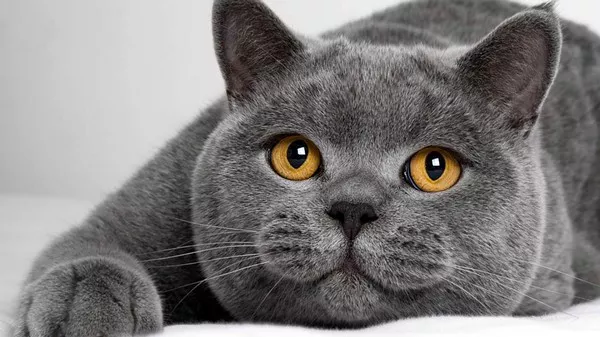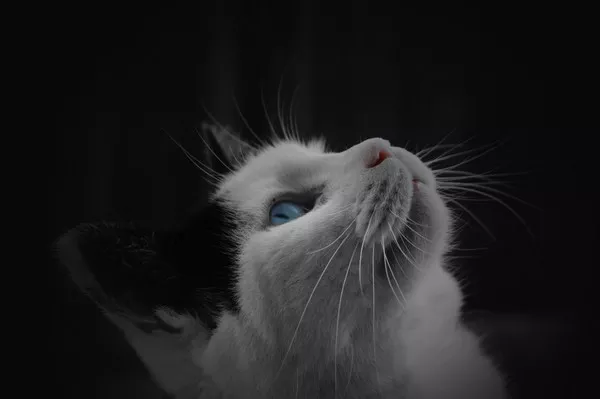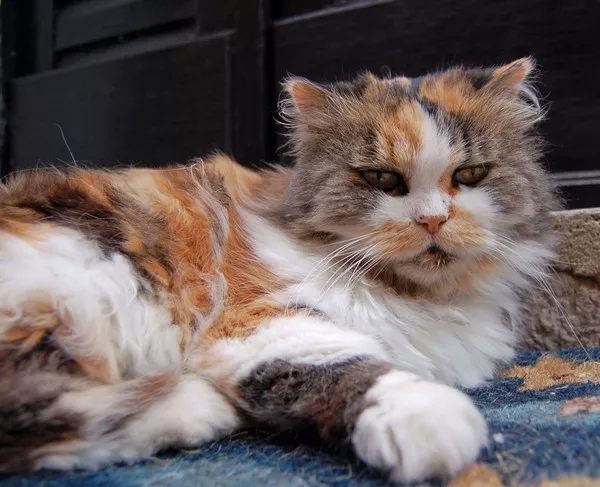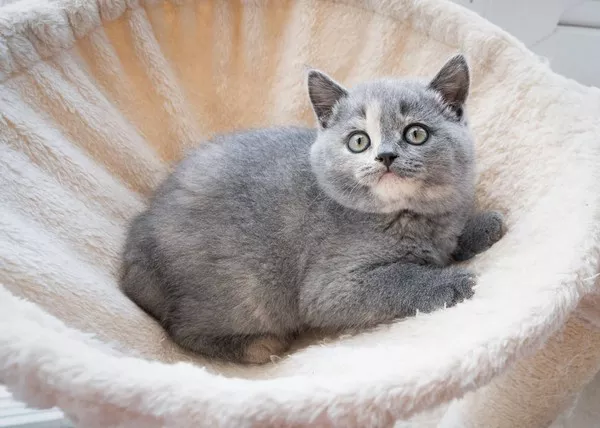The decision to bring a new pet into your home is a momentous one, and for many households, the question arises: Are British Shorthair cats good with dogs? British Shorthair cats, known for their placid temperament and regal appearance, have become popular feline companions. Meanwhile, dogs are often cherished members of families for their loyalty and companionship. In this exploration, we delve into the dynamics between British Shorthair cats and dogs, examining their individual characteristics, potential challenges, and strategies to foster a harmonious relationship between these two beloved species.
Understanding the British Shorthair Temperament
1. Gentle Demeanor:
British Shorthair cats are celebrated for their gentle and easygoing demeanor. Their calm nature is a defining trait that makes them well-suited for various living environments. These cats are generally laid-back and less likely to be easily stressed, creating a solid foundation for positive interactions with other pets.
2. Adaptability:
The British Shorthair’s adaptability contributes to their ability to coexist with other animals, including dogs. These cats are known for their flexibility in adjusting to new surroundings and forming bonds with different family members, making them potentially receptive to the presence of a canine companion.
3. Independent Yet Affectionate:
British Shorthair cats strike a balance between independence and affection. While they appreciate their personal space, they also form strong bonds with their human family members. This combination of traits suggests that British Shorthairs may be open to companionship with dogs while maintaining their individuality.
Dogs and British Shorthairs: Potential Compatibility Factors
1. Individual Personality of the Cat:
The personality of the individual British Shorthair cat plays a crucial role in determining their compatibility with dogs. While the breed is generally known for its amiable nature, each cat is unique, and some may be more or less accepting of the presence of a canine companion. Observing the cat’s temperament and comfort level is essential when introducing a new dog into the home.
2. Dog Breed and Temperament:
The specific breed and temperament of the dog are important considerations when assessing compatibility. Some dog breeds are known for their gentle and patient nature, making them more suitable for cohabitating with cats. On the other hand, high-energy or prey-driven dogs may require careful introductions and supervision to ensure a positive relationship with a British Shorthair.
3. Introduction and Acclimatization:
The key to a successful relationship between British Shorthair cats and dogs lies in the gradual and positive introduction of the two animals. Rushing the process may create stress and anxiety, potentially leading to negative interactions. Patience and a well-thought-out introduction plan contribute to a smoother transition for both pets.
Strategies for Introducing British Shorthair Cats and Dogs
1. Create a Safe Space for the Cat:
Before introducing a new dog to the household, ensure that the British Shorthair cat has a designated safe space. This space should include the cat’s bed, litter box, and essential amenities. Allowing the cat to retreat to this area provides a sense of security during the initial stages of introduction.
2. Gradual Introduction:
Gradual introductions are crucial to allow the cat and dog to become familiar with each other’s scents and presence. Start by allowing them to see and smell each other through a cracked door or a barrier. Gradually progress to short, supervised face-to-face interactions while closely monitoring their behavior.
3. Positive Reinforcement:
Positive reinforcement plays a pivotal role in fostering positive associations between the British Shorthair cat and the dog. Reward both pets for calm and non-aggressive behavior during interactions. Use treats, praise, and play as positive reinforcements to encourage a harmonious relationship.
4. Supervised Interactions:
Supervision is essential during the initial stages of interaction between a British Shorthair cat and a new dog. This oversight allows for prompt intervention in case of any signs of stress or discomfort. Gradually extend the duration of supervised interactions as both pets become more accustomed to each other.
5. Provide Vertical Spaces:
British Shorthair cats often appreciate vertical spaces, such as cat trees or shelves. These elevated areas offer the cat an escape route and vantage point, allowing them to observe the dog from a safe distance. Providing vertical spaces contributes to the cat’s sense of security.
6. Respect Individual Boundaries:
Recognize and respect the individual boundaries of both the British Shorthair cat and the dog. Some cats may be more tolerant of close proximity, while others may prefer a greater distance. Similarly, dogs may have varying levels of curiosity or interest in interacting with the cat. Allow each pet to set their comfort level.
Potential Challenges and Solutions
1. Prey Drive:
Some dog breeds have a stronger prey drive, which may pose challenges when introducing them to a British Shorthair cat. Breeds traditionally used for hunting or herding may exhibit a natural inclination to chase or display predatory behaviors. Close supervision and positive reinforcement are crucial in managing such situations.
2. Stress and Anxiety:
Stress and anxiety can affect both the cat and the dog during the introduction process. Monitor for signs of stress, such as excessive grooming, hiding, or changes in behavior. If either pet displays signs of distress, consider slowing down the introduction process and providing additional support, such as pheromone diffusers or calming aids.
3. Territorial Behavior:
Cats, including British Shorthairs, can be territorial animals. Introducing a new pet, especially a dog, may trigger territorial behaviors. Provide each pet with their own designated spaces and gradually integrate shared spaces. Creating a positive association with shared areas helps alleviate territorial concerns.
Benefits of a Positive Relationship
1. Companionship:
A positive relationship between a British Shorthair cat and a dog can provide companionship for both pets. Many cats and dogs form close bonds, engaging in play, grooming, and even napping together. The companionship between the two species can enrich the lives of the pets and their human family members.
2. Enrichment and Play:
Dogs and cats have different play styles, and their interactions can provide enrichment for both. British Shorthair cats, with their playful nature, may enjoy engaging in interactive play with a dog. Supervised play sessions can promote physical activity and mental stimulation for both pets.
3. Reduced Loneliness:
For households with both British Shorthair cats and dogs, the presence of a companion can alleviate loneliness for each pet. The shared living space allows for social interactions and a sense of camaraderie, reducing the risk of boredom and providing emotional support.
Conclusion
In conclusion, the compatibility between British Shorthair cats and dogs is influenced by various factors, including the individual personalities of the pets, the specific breeds involved, and the introduction process. With patience, gradual introductions, and positive reinforcement, many British Shorthairs can coexist harmoniously with dogs. The key is to understand the unique needs and preferences of each pet and to create an environment that fosters mutual respect and companionship. Whether curled up together for a nap or engaging in playful antics, the bond between a British Shorthair cat and a dog can be a source of joy and fulfillment for pet owners fortunate enough to witness the friendship that can blossom between these two extraordinary species.























